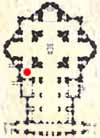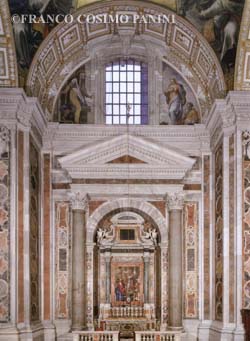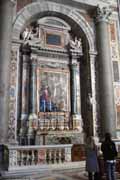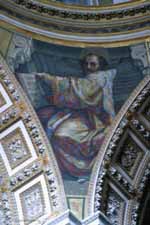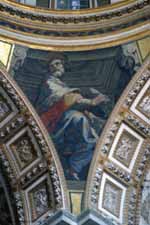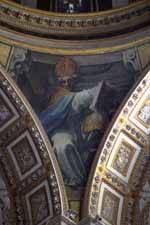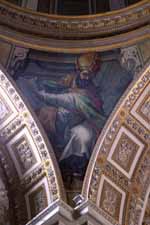 |
| Grottoes
Vatican City Colonnade Saints Floorplan #2 |
| Altars
Monuments The History |
| Related
Items Transfiguration St Gregory - Great |
From:
'St. Peter's - Guide to the Basilica and Square'
The Clementine Chapel was commissioned by Pope Clement VIII (1592-1605),
whose coat of arms stands out against the paving. It was begun by Michelangelo
and completed by Giacomo Della Porta (1540-1602) for the Jubilee in 1600.
The altar is dedicated to St. Gregory the Great (590-604). In a sarcophagus
beneath the altar his remains are preserved, brought here in 1606. This
Pope, also called the "Savior of the Church" and the "Defender of Rome",
is associated with the name of the Gregorian chant or plainsong which
he promoted.
From: 'The Basilica
of Saint Peter in the Vatican' by Franco Cosimo Panini
Conceived as a pendant to the Gregorian Chapel on the other side of the
Basilica, the Clemenine Chapel occupies the southeast corner of the original
centrally-planned layout and consists of a central space covered by a
copula and of two small aisles extending north towards the nave and west
towards the south transept. The chapel takes its name from Clement VIII,
the pope who - for the Jubile of 1600 - commissioned its rich decoration
of colored marbles, stuccos and mosaics inspired by the history of salvation
and the life of Christ.
Spandrels
(1559-1603) on the Vault of the Clementine Chapel
From designs by Cristoforo Roncalli known as Pomarancio (1552-1626)
